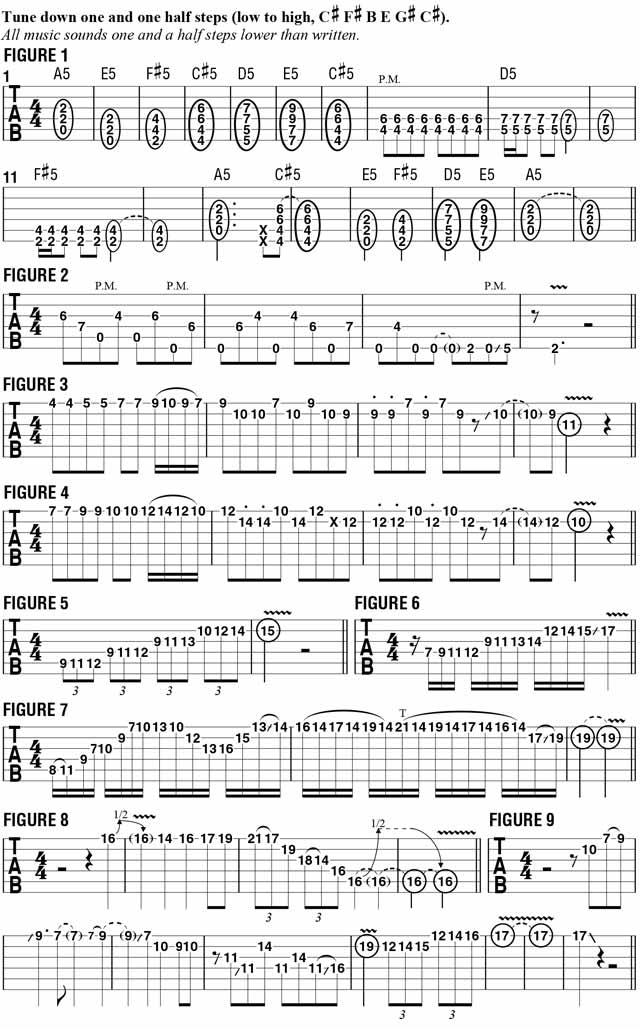How to Play My Guitar Solo from All That Remains' "Victory Lap"

This month, I’d like to detail the guitar solo I crafted for the All That Remains song “Victory Lap,” as heard on 2015’s The Order of Things. As always, when composing this solo, I considered the elements that already exist in the composition, such as the various themes and variations that are built into it, and the rhythmic interplay between each of the licks as the solo progresses. The “direction of the line” is my guiding concept.
FIGURE 1 illustrates the rhythm part played behind the solo: this 18-bar passage consists mostly of whole-note and half-note power chords, with eighth- and 16th-note palm muted accents added in bars 8, 9 and 11. The overall tonality is based on the relative major/minor axis of the keys of A major and F# minor.
FIGURE 2 details the main riff of “Victory Lap,” which is built from steady eighth-note arpeggios that outline the progression A-E-F#m. When playing through this part, be sure to palm-mute the open low E and A strings throughout. In formulating the guitar solo, my goal was to reference and incorporate the melodic nature of this part.
The result is shown in FIGURE 3: sounding mostly eighth notes, this line makes direct reference to the chord shift from A to E, resolving to the relative minor, F#m, at the end of the phrase. That riff is harmonized on the recording a third higher, diatonic to the A major scale (A B C# D E F# G#), via the line shown in FIGURE 4.
Through the next sections, I tried to push the intensity of the solo a little higher as it progresses, in the style of Queen’s Brian May. FIGURE 5 is built from an ascending eighth-note triplet pattern that’s also based on the A major scale, followed with the line in FIGURE 6, wherein the concept is re-configured in straight 16th notes. Over C#5, I switch to an F# diminished seven arpeggio, illustrated in bar 1 of FIGURE 7, which moves across three octaves, followed by a fast legato run sounded with repeating hammer/pulls on the high E string along with a single fretboard tap.
The pre-chorus is up next, so I borrowed from the vocal melody to play the relatively simple phrase shown in FIGURE 8, which concludes with a quickly descending F#m arpeggio. FIGURE 9 shows the final solo phrase, which is based on the chorus vocal melody while also revisiting ascending eighth-note triplet rhythms. To me, this solo unifies the composition overall while also serving to move it forward in musicality and intensity.
This is my last column for the time being. I hope you enjoyed these lessons and look forward to seeing you out on the road!

Get The Pick Newsletter
All the latest guitar news, interviews, lessons, reviews, deals and more, direct to your inbox!









![Joe Bonamassa [left] wears a deep blue suit and polka-dotted shirt and plays his green refin Strat; the late Irish blues legend Rory Gallagher [right] screams and inflicts some punishment on his heavily worn number one Stratocaster.](https://cdn.mos.cms.futurecdn.net/cw28h7UBcTVfTLs7p7eiLe.jpg)
